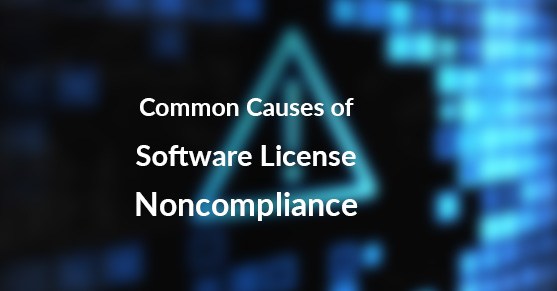One of the biggest threats to a business is the repercussions of noncompliance. Whether you’re out of compliance with your security system and privacy protocol, your financial documentation, or your software licensing, noncompliance is a difficult barrier to hurdle.
In an age of widespread piracy and illegal software usage, compliance around software licensing is often brushed off as something that won’t ultimately affect an organization. However, this is entirely false, and license compliance is detrimental to the overall success and integrity of a business. Not only do software manufacturers and vendors care for the legal usage of their products, but customers need to know that a company conducts itself with integrity and honesty.
When it comes to software licensing, it’s not always easy to stay in compliance with your license. You may have upgraded your system, and the usage rights changed; maybe you started using a Virtual Machine (VM) and didn’t know the licensing requirements changed. Whatever your situation is, it’s important to address the issues before putting your business in jeopardy
An audit of a company’s software licenses is neither easy, nor is it cheap, so understanding how companies become noncompliant is a crucial step in recognizing where your organization stands. In our experience, four common factors play a role in license noncompliance.
Four common causes of license noncompliance
1) Inadvertent Usage:
One of the most prominent problems organizations run into is the unintentional misuse of specific licenses. Many companies acquire software licenses that “limited-use licenses” meant solely for non-production and testing environments — these help in pre-release development, performance testing, and failover. It’s one option companies have for cutting costs, and they generally follow the rules of the limited-use license at first. However, self/internal-audits will often show an organization that many of their limited-use licensed software has been deployed in production environments, thus breaking compliance with the software manufacturer’s guidelines.
2) Misinterpretation of Your License:
The terminology and definitions within any software license are complicated. Usage parameters, descriptions, and permissions, in general, are constantly changing, which is why so many users fail to understand the terminology associated with their software. With Microsoft licenses, users may not know the difference between a qualified user or device. With IBM licenses, users may be confused about how a concurrent license is different from a floating user license. And what about knowing the differences between Oracle’s full-use license for applications versus their embedded software license? For each software manufacturer, some terms are consistently misinterpreted. Though it seems inconvenient, there is necessary flexibility to the terminology and decrees in software licenses. That, combined with the ever-evolving needs of an organization, often leads to licensing term violation and noncompliance.
3) Changing Use Rights or Upgrade:
Much like product and license definition, product use rights are subject to erratic changes and alterations, making it easy to miss vital licensing details. As more companies try to write indirect use policies for their customers, this issue pops up more frequently than in the past. One way to avoid missing out on any updates in use rights is by consistently checking the manufacturer’s site and making any necessary changes to your users when applicable.
Additionally, use rights can change when you upgrade (or downgrade) your software. The big question becomes whether the rights for the original purchase or the rights accompanying the upgrade apply to your situation. This changes from vendor to vendor, so be sure to clarify with them before you begin updating or upgrading your software.
4) Missed Components in Virtualization:
VMs have opened up a world of opportunities for businesses, and they’ve also opened up the door to new license compliance implications. Many of which are unknown to software customers, which increases the chance of your organization running into software noncompliance. Every vendor has different rules and specific regulations on how the hosts manage their virtual environment products.
Reach Out
If you’re dealing with these scenarios or are looking to undergo an internal audit, reach out to XTIVIA. We have an overarching knowledge of all licensing frameworks with a focus on IBM, Microsoft, and Oracle. For more information, feel free to reach out to us via the comment section below or contact us here. We’d love to get your business on the right track to software compliance!

